About Cocaine Addiction
Learn More About Cocaine Addiction
Cocaine is a powerful and addictive stimulant that produces intense temporary sensations of energy, excitement, and euphoria. These effects, which typically last from 15 to 30 minutes, are often accompanied by numbness to pain and an inflated sense of confidence, competence, and sexuality. In its powdered form, cocaine is most commonly inhaled through the nose, though it can also be administered orally or intravenously. When used in rock form, the drug is usually heated to a high temperature and the resultant fumes are inhaled by the user.
The combined intensity and brevity of cocaine’s effects can cause users to experience a strong desire to abuse the substance again and again. Ongoing cocaine abuse will cause the development of tolerance, which means that users will need to ingest increasingly larger doses in order to experience the pleasurable effects that they previously achieved with smaller amounts of the drug.
Cocaine abuse can quickly become an all-encompassing obsession, and can disrupt a person’s ability to function properly at work, in school, or within the context of interpersonal relationships. The good news is that the continued risk of experiencing cocaine-related damage can be eliminated with effective professional intervention. As thousands of individuals who were once addicted to cocaine have discovered, treatment can be the path back to a healthier and happier drug-free life.
Statistics
Cocaine Addiction Statistics
Cocaine trails only marijuana as the most heavily trafficked illegal drug in the entire world. In the United States, it is the second most commonly abused drug, again ranking second to marijuana. Experts estimate that more than 35 million Americans have abused cocaine at least once in their lives, and about two million of these people are current users of cocaine, which is defined as having used the drug at least once in the previous 30 days.
Among adolescents and teenagers, the prevalence of cocaine abuse reached its highest point in 1999, when more than 2.6 percent of high school seniors reported having abused the drug at least once in the previous month. By 2012, the percentage of high school seniors who were current cocaine users had been cut in half, though 8.5 percent of teens in this category said they had used the drug at least once in their lives. In the broader demographic of adolescents and teens ages 12 to 17, the rate of past-month cocaine use currently stands at 0.2 percent, and lifetime use of the drug stands at just under 1 percent.
The Drug Abuse Warning Network (DAWN) reports that cocaine abuse remains the top cause of drug-related visits to emergency rooms and urgent care facilities in the U.S. In the most recent year for which statistics were available, cocaine use was a factor in more than 450,000 visits to an ER or urgent care center.
Causes & Risks
Causes and Risk Factors for Cocaine Addiction
The development of a dependence upon cocaine or any other addictive substance most often results from a combination of genetic, or biological , factors and external, or environmental, influences. Decades of research into this topic indicates that that following are among the more common factors that can influence or increase a person’s risk for developing a substance use disorder:
Genetic: People who have a first-degree relative, such as a sibling or parent, who has developed a substance use disorder are significantly more likely to have a similar problem than is someone whose family history does not include struggles with drug problems. Depending upon the age when the problem occurred and the severity of the issue, if one or both parents have had substance abuse problems, the risk of a child also developing chemical dependency can be between three to eight times greater than the risk within the general population. Researchers have also noted that a family history of mental illness increases a person’s risk for developing an addiction; as is the case with substance abuse, having a first-degree relative with mental illness puts a person at greater risk.
Environmental: Growing up in a family that has been impacted by substance abuse and/or mental illness can also be an environmental influence on the eventual development of a substance use disorder. Children who are exposed to drug use are more likely to also engage in this behavior than are the offspring of parents who maintain drug-free households. If a parent struggles with mental illness, the impact of his or her struggles can create a stressful or chaotic environment for children, which can prompt them to turn to substance abuse as a means of emotional escape or self-medication. Adults who experience stress, pressure, or trauma may also be enticed by cocaine’s euphoric and numbing properties.
Risk Factors:
- Family history of substance abuse
- Family history of mental illness
- Presence of drug use in one’s house or neighborhood
- Living in an environment where drug use is prominent
- Poor parental supervision
- Personal struggle with mental illness
- Personal history of prior substance abuse
- Living or working in a high-stress environment
- Associating with friends, colleagues, or other peers who engage in cocaine abuse
Signs & Symptoms
Signs and Symptoms of Cocaine Addiction
The signs and symptoms of cocaine abuse will vary from person to person depending upon the amount of the drug that they are abusing, the length of time that they have been engaging in this behavior, and whether or not they are also abusing other substances or suffering from a co-occurring disorder. Common symptoms that may indicate cocaine abuse or addiction include the following:
Behavioral symptoms:
- Increased energy, to the point of hyperactivity
- Rapid-fire speech patterns
- Unprovoked outbursts of anger or aggression
- Acting in a reckless or risky manner
- Borrowing or attempting to steal money
- Lying about whereabouts, activities
- Associating with a new group of friends
- Withdrawing from family and former friends
Physical symptoms:
- Pupil dilation
- Runny nose
- Nosebleeds
- High blood pressure
- Increased heart rate
- Increased body temperature
- Profuse perspiration
- Loss of appetite
- Insomnia
Cognitive symptoms:
- Euphoria
- Excessive confidence
- Restlessness
- Irritability
- Poor decision-making capabilities
- Hallucinations and delusions
- Psychosis
Psychosocial symptoms:
- Dramatic mood swings
- Depression
- Agitation and irritability
- Inability to experience pleasure
Effects
Effects of Cocaine Addiction
The long-term impact of untreated cocaine abuse or addiction can be devastating. Depending upon the nature and severity of a person’s cocaine problem, this impact can be profoundly destructive to his or her physical, emotional, mental, financial, and social wellbeing. The following are some examples of how chronic cocaine abuse or addiction can damage or destroy a person’s life:
- Heart problems, including cardiac arrest
- Respiratory distress
- Hypertension
- Liver damage
- Kidney damage
- Stroke
- Malnutrition
- Irreversible cognitive impairment
- Financial devastation
- Strained or ruined personal relationships
- Declining performance at work
- Unemployment
- Academic failure
Co-Occurring Disorders
Cocaine Addiction & Co-Occurring Disorders
Many people who struggle with cocaine abuse or addiction are also dealing with a co-occurring mental health disorder. The following are among the disorders that a person with a cocaine addiction can struggle with at the same time:
- Major depressive disorder
- Persistent depressive disorder
- Anxiety disorders
- Bipolar disorder
- Schizoaffective disorder
- Borderline personality disorder (BPD)
Withdrawal
Effects of Cocaine Withdrawal & Overdose
Effects of cocaine withdrawal: Sudden cessation of cocaine abuse after a person’s body has become dependent upon this drug will likely lead to a number of unpleasant symptoms. Depending upon the severity of a person’s cocaine addiction, the following withdrawal symptoms may occur:
- Intense drug cravings
- Anxiety
- Depression
- Restlessness and irritability
- Fatigue and lethargy
- Nightmares
- Paranoia
Effects of cocaine overdose: Because cocaine is often abused in binges, and because chronic users will require increasingly larger or more potent doses to experience the high that they desire, overdose is a persistent risk. Cocaine overdose is a dangerous experience that can be fatal. If a person exhibits the following signs and symptoms of cocaine overdose, immediate medical attention may be required:
- Cardiac arrhythmia
- Cardiac arrest
- Highly elevated blood pressure
- Respiratory failure
- Dangerously high body temperature
- Kidney failure
- Delirium
- Stroke
















